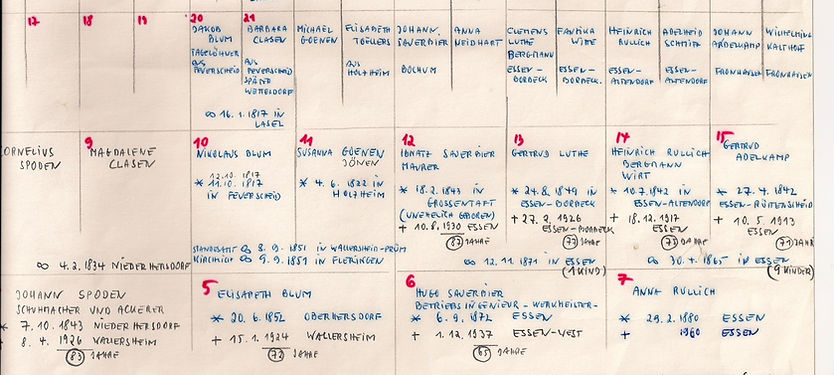
Essen
In 1942 the British Royal Air Force began dropping the first of thirty-six thousand tons of bombs on the German city of Essen, the city where my mother and her family lived. My mother had recently turned sixteen. The bombing did not stop till she was twenty.
My mother has lived her life as though death was always in the sky.
Germany and the impact of the Second World War feature prominently in my family's pathology.
My mother's brother, Peter Spoden, was a pilot with the Luftwaffe and my father was a member of the American occupation forces under General George S. Patton.
In 1995 my Uncle Peter wrote his memoirs; I Was a Night Fighter in Göring's Luftwaffe. I asked his permission to use his story as the basis for a possible solo-performance piece. This page is dedicated to curating certain assets I have collected over time and will reflect my progress & ever evolving ideas regarding approach.
As of this writing the piece has become much more about a family than an individual. This is of course subject to change.
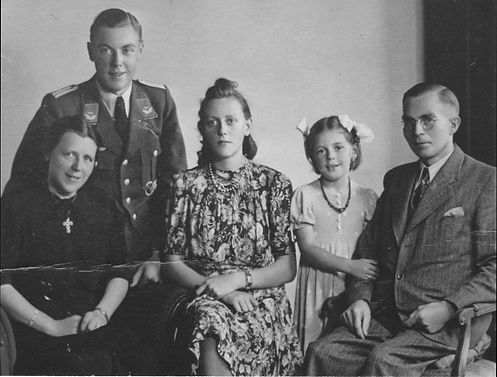
My Uncle Peter
My Mother
Elisabeth
My Aunt
Gerda
My Grandfather
Peter Sr.
My Grandmother
Gertrude
The Spoden Family
Circa 1943
“...the area we now call Germany contained at one time no fewer than 77 major principalities, 51 imperial cities, 45 Imperial villages, and 1,475 Imperial Territories under the sway of so-called Independent Knights of the Empire, owing only a slender allegiance to their emperor in Vienna.”[2]
The German word ‘essen’ is most commonly identified as the infinitive for the verb ‘to eat’ or the noun ‘food;’ however the name of the town is believed to have come from the Old German, Eschen, or ‘a place of ashe trees,’ a result of the surrounding forests that supplied iron mongers with charcoal. [3] The wood of the ash is white and firm and was considered the best for construction of spears, bows, and arrows, linking the city of Essen with the manufacture of armaments from its early history.
Coal deposits were discovered in Essen in the 14th century and the craft of coal mining began there on a notable scale around 1450.
[1] "City of Essen History." Portal Aktuell. Accessed November 29, 2011. http://essen.de/en/Leben/stadtportrait_e/geschichte_e.htm
[2] Batty, Peter. The House of Krupp. New York: Stein and Day, 1967. 25.
[3] Ibid. 21.
My Uncle Peter: Interviewed for British Television
Essen:
A Place of Ashe Trees
The Ruhrgebiet (Ruhr Region) covers an area of approximately 4000 square miles and is bounded by the Rhine River to the west, the Lippe River to the North and in the South, the Ruhr. The city of Hamm is considered the edge of the Ruhr Valley’s eastern border. Large coal deposits located along and to the north of the Ruhr River transformed the Ruhr Valley from a primarily agricultural region to one of the most important and profitable industrial areas of the 19th and 20th centuries; a distinction it retains.
The city of Essen is located in the south central section of the Ruhr Valley and sits on the banks of the Ruhr River. Although there is archeological evidence of habitation in this area dating to the Stone Age, recorded history of the town begins with the establishment of a Benedictine Monastery circa 800 C.E. [1]
My Uncle Peter Spoden: History Channel
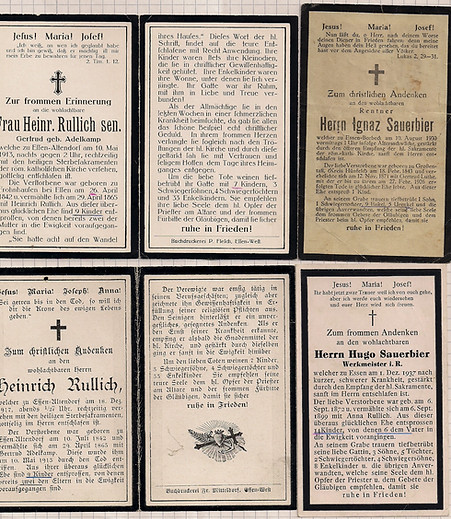
In order to understand the importance of the Ruhr Valley and the city of Essen, it is important to study and understand the Krupp family.
The Krupp family was the German Armorer through three wars and their munitions factories among the highest priority targets for allied bombing.
Catholic Essen
From 850 through the mid 16th century the Catholic town of Essen was ruled by a ‘Princess Abbess,’ the head of a secular charterhouse established for the daughters of Saxon nobility.1
The Abbess had at her command a small army with which she was able to maintain rule. In the mid-sixteenth century the handful of Burghers that made up Essen’s merchant class began to sense the possibility of real prosperity when, due to the depletion of the surrounding forests which supplied charcoal for the fires of local crafts-folk, ironworkers migrated from the hills to the valley where they could have access to the abundant coal deposits along the Ruhr. Many of Essen’s less affluent Burghers became ironmongers.
In 1563 the City Council of Essen officially embraced the Protestant Reformation. The advent of Protestantism coupled with shift of iron manufacture to the town accelerated the growing divide between the Abbess Princess and the merchant class. As firearms began to replace the crossbow as the preferred weapon of war several of these ironworkers and the merchants they supplied discovered a new and profitable use for their craft. The Thirty Years War helped make Essen a strategic arms manufacturing center with its forges and gunsmiths turning out somewhere in he neighborhood of 15,000 guns and rifles a year.
“Their customers were neighbouring German princes or else agents for foreign armies such as the British or the French. By all accounts it would seem to have been a lucrative line of business—so that when Germany became the battlefield for the Thirty Years War, Essen was especially well-placed to supply all comers. ... The city’s records for 1608 mention some two dozen gunsmiths and dealers in weapons doing business within the bounds of the mediaeval walls—but already by 1620, barely two years after the war, the number had grown to fifty-four.”2
When he died in 1624, Arndt Krupp left behind four children; all inherited the father’s knack for turning a profit. The eldest daughter, Catherina, married a wealthy local merchant and outlived him, thus adding to the Krupp fortune a trend that several other Krupp women would follow. Arndt’s eldest son, Anton “...married into one of Essen’s most prosperous and well established gunsmith families, the Kroesens” and was soon peddling over 1000 gun barrels a year.6 Muhlen says of Anton,
“The good luck which had helped his father amass real estate favored the son, too. Three years after he went into the gun trade, war broke out. Luckily for him, it lasted thirty years and created an unheard-of-demand for arms of any kind. This Thirty Years’ War ended the dream of peaceful co-existence between Protestant and Catholic Germans. Foreign powers invaded Germany in the name of their religions and fought each other on German soil in a bitter, bloody struggle. ... This second Krupp of Essen supplied both sides –the Catholics as well as the Protestants—with his wares, if and when they paid for them. An alert businessman, he also bought up quantities of raw iron as the raw material from which gun barrels were made, and sold the scarce commodity to the gunsmiths of Essen at good profits.”7
The next generation of Krupp’s were referred to in local chronicles as “Essen’s uncrowned Kings.” The Krupps were the wealthiest family in Essen and many members of the family held powerful political posts. According to Batty,
“The rise to riches and respectability within just four generations of Arndt’s unheralded arrival in the city coincided with the succession to power of another German family, and one with whom the Krupp’s later destinies were to be indissolubly linked—the house of Hohenzollern.”8
Prussia and the
Cannon King
By 1815 Essen belonged to Prussia, then under the reign if Frederick William II, the Hohenzollern heir to Frederick the Great. Essen had seen four more generations of Krupps headed by Georg Dietrich, Friederich Jodokus, Peter Friedrich then Friedrich. Friedrich Krupp came perilously close to losing the family fortune and died penniless in 1826. Friedrich was a highly ambitious man although somewhat naïve and impetuous. He became obsessed with discovering the secret of casting steel, a method for the smelting of steel developed by a watchmaker in England in 1740 and improved by several British firms over the next 60 years. This method for casting crucible steel was a closely guarded secret. Steel had a limited market at the time and was used primarily for making watches and precision tools. With the advent of the machine age in the early nineteenth century steel became a highly sought after commodity. Learning the secret of casting steel was akin to knowing alchemy and Friederich pursued it obsessively. Friedrich ultimately failed after a series of shoddy business partnerships but he left his son Alfred a working albeit bankrupt steel foundry. It is Friederich for whom the present company Friedrich Krupp AG, is named.
1 "City of Essen History." Portal Aktuell. Accessed November 29, 2011. http://essen.de/en/Leben/stadtportrait_e/geschichte_e.html.
2 thru 6 Batty
7 Muhlen, Norbert. The Incredible Krupps; the Rise, Fall, and Comeback of Germany's Industrial Family. New York: Holt, 1959.
8 Batty 29
Essen & The Krupp Family
Death notices for members of the Rullich and Sauerbier families of Essen;
My mother's maternal forbears.
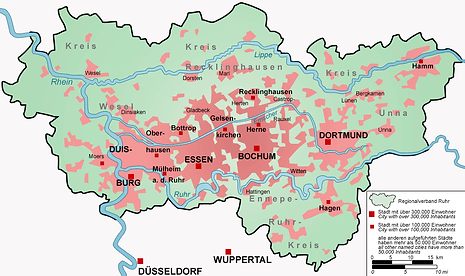
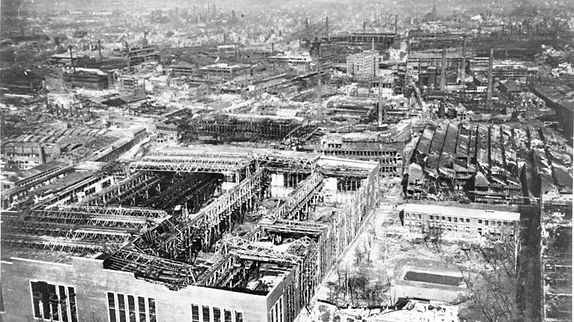
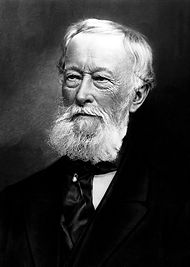
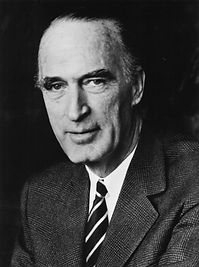

Alfred Krupp: The Cannon King
Alfred Krupp von Bohlen
und Halbach
Krupp Factory Essen: 1945
1587 is the first time the name Krupp appears in the Essen Register of Merchants as ‘Arndt Krupe’ and represents the beginning of the relationship between Essen and the Krupps.3 Arndt Krupp was a convert to Protestantism and came to Essen from the Lower Rhine River region, which remained under Catholic control. Within thirteen years of his arrival in Essen Arndt Krupp was one of its wealthiest citizens. Krupp set up shop as a merchant selling goods considered common at the time; wine, spices, iron, liquor, and cattle. In 1599 the Great Plague, or as it was referred to at the time, ‘The Black Pest’ came to Essen. According to local archives, “...entire streets of Essen were like a cemetery ‘in their sad desertion.”4 Arndt Krupp prospered by buying up land at rock bottom prices from frightened Essenders, convinced that the end of the world was upon them who decided to get rid of everything and live it up till the end. When the threat of the plague was clearly over, Krupp sold the land back at a handsome profit. After this, Arndt Krupp’s name begins appearing in the city’s records with greater frequency.5
